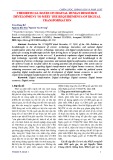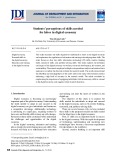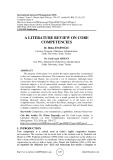
http://www.iaeme.com/IJM/index.asp 1 editor@iaeme.com
International Journal of Management (IJM)
Volume 9, Issue 3, May–June 2018, pp. 01–13, Article ID: IJM_09_03_001
Available online at
http://www.iaeme.com/ijm/issues.asp?JType=IJM&VType=9&IType=3
Journal Impact Factor (2016): 8.1920 (Calculated by GISI) www.jifactor.com
ISSN Print: 0976-6502 and ISSN Online: 0976-6510
© IAEME Publication
THE IMPACT OF HUMAN CAPITAL
DEVELOPMENT INITIATIVES ON EMPLOYEE
PERFORMANCE OF IT EXECUTIVES: CASE
STUDY OF BANGALORE, INDIA
Murali S
Assistant Professor, Department of Management Studies,
Ramaiah Institute of Management Studies, Bangalore, India
ABSTRACT
Human capital development initiatives for purposes of this study refer to the training and
development programs that the IT executives in Bangalore, India are accorded with.
Currently, the fact that human capital development of employees translates to competitive
advantages is no longer a subject for debate. According to Tomé, and Goyal, (2015) human
capital development of employees not only enhances their productivity in the short term, it
also helps prepare them for future skills and responsibilities. For organizations, industries
and economies, this translates to a lot of things including improved profitability,
performance efficiency, creativity and innovativeness. Moreover, it also helps improve
employee engagement while at the same time reducing turnover rates. The challenge
however is how to develop and implement the best human capital development strategy for
specific industries and organizations. The review of literature focuses on the factors that
influence IT firms in Bangalore, India to adopt human capital development initiatives, as
well as the significance of the initiatives to IT executives. This research paper discusses the
initiatives and its impact on the strategies and operations of the executives, and how this
impacts on their abilities to contribute positively towards the attainment of their goals and
objectives.. This way, the paper gets to discuss the overall function and impact of the
human capital development initiatives on performance of the IT professionals.
Key words: Human Capital Development, Performance Management, Training &
Development, IT Services.
Cite this Article: Murali S, The Impact of Human Capital Development Initiatives on
Employee Performance of it Executives: Case Study of Bangalore, India. International
Journal of Management, 9 (3), 2018, pp. 01–13.
http://www.iaeme.com/IJM/issues.asp?JType=IJM&VType=9&IType=3






























